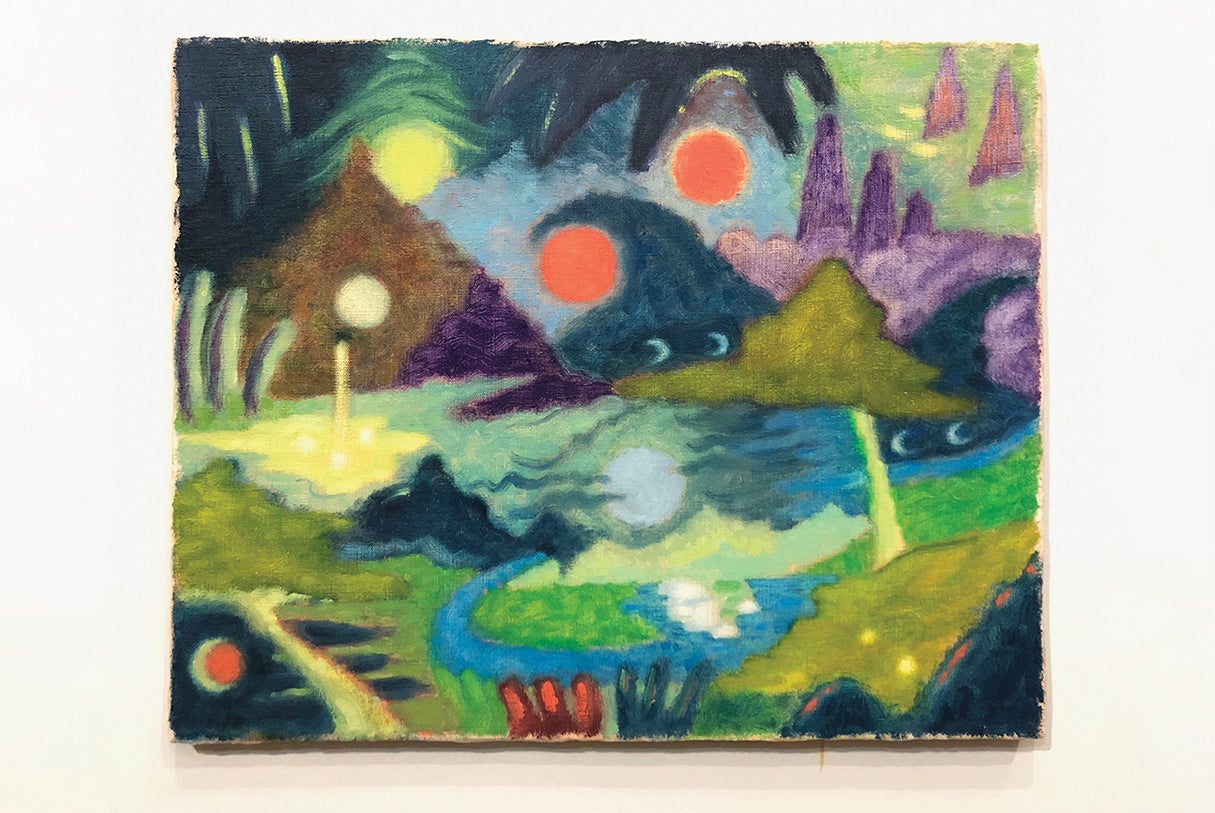New program pairs health care facilities with donated art

This oil on linen piece titled “Pan Pipe Landscape” (2017) by Alan Prazniak, was gifted to the Cleveland Clinic Art Collection from Avo Samuelian and Hector Manuel Gonzalez.
Image courtesy of 106 Green
Art can play a central role in creating the warm, welcoming environments that health care facilities seek to offer, but not all facilities are able to make large-scale investments in quality pieces. A new platform called Museum Exchange aims to change that.
The Museum Exchange, a digital platform for art donations, plays matchmaker between art collectors and institutions. The program was launched with the goal of democratizing art philanthropy for smaller museums, but in August 2022, expanded to offer a dedicated catalog for health care facilities.
The program offers even the smallest facilities an opportunity to make a big impact with their art programs, says Joanne Cohen, director, health care and education division, at the Museum Exchange. In her former role as executive director and curator of the Cleveland Clinic Art Program, Cohen invested in more than 7,000 artworks. As she learned through that role, “It helps if an organization can get 30 or 40 pieces to create context for their artwork. It’s a lot harder to select a handful of pieces for an organization versus acquiring more in volume.”
The Museum Exchange makes that scale feasible for organizations without large art budgets.
With the launch of the pilot for its health care platform, Museum Exchange invited 10 organizations to participate, including the Cleveland Clinic and Rogosin Institute, a nonprofit kidney failure dialysis provider based in New York. The institutions were invited to review catalogs of artwork being offered for donation by collectors and submit a proposal to receive works as gifts.
David Wyman, president and CEO at the Rogosin Institute, found the process easy and the rewards powerful. Through his experience leading artwork investments for other facilities, he has seen how art can shape interactions.
“If the patient walks into an environment with worn chairs and dated decor, that sends a message on how we respect you as a patient and how we respect our employees,” Wyman says. “Having museum-quality artwork to create a noninstitutional environment is incredibly important.”




